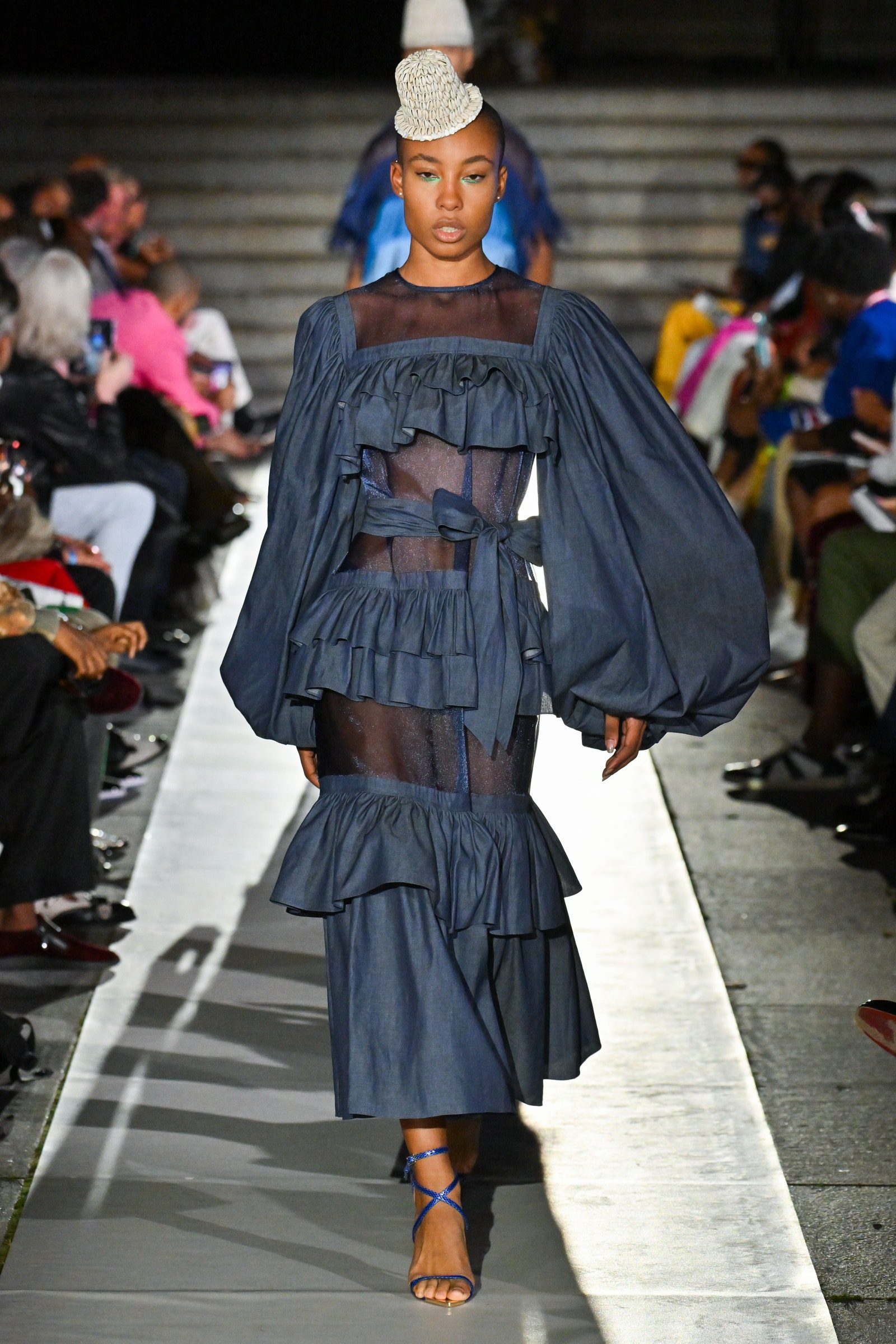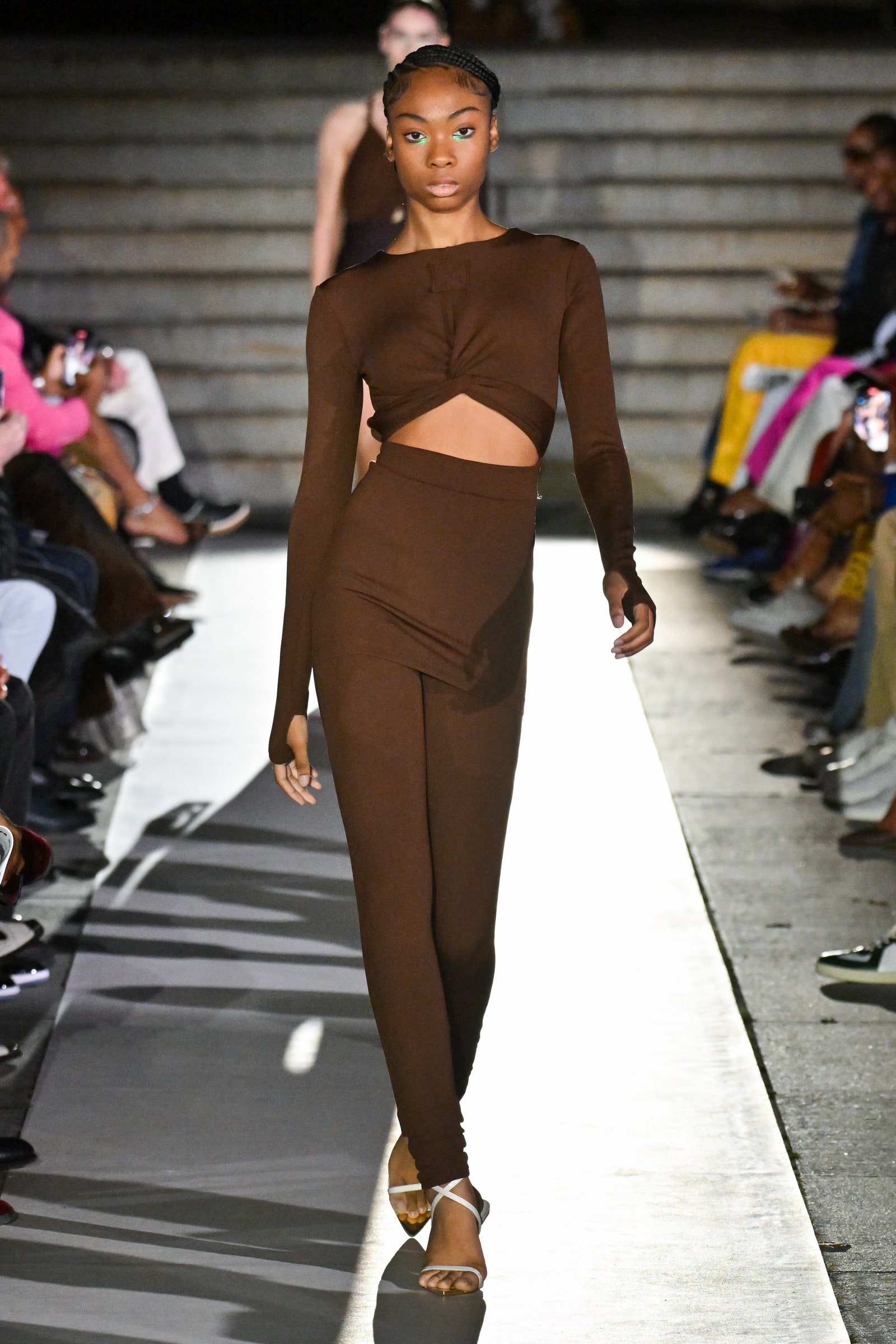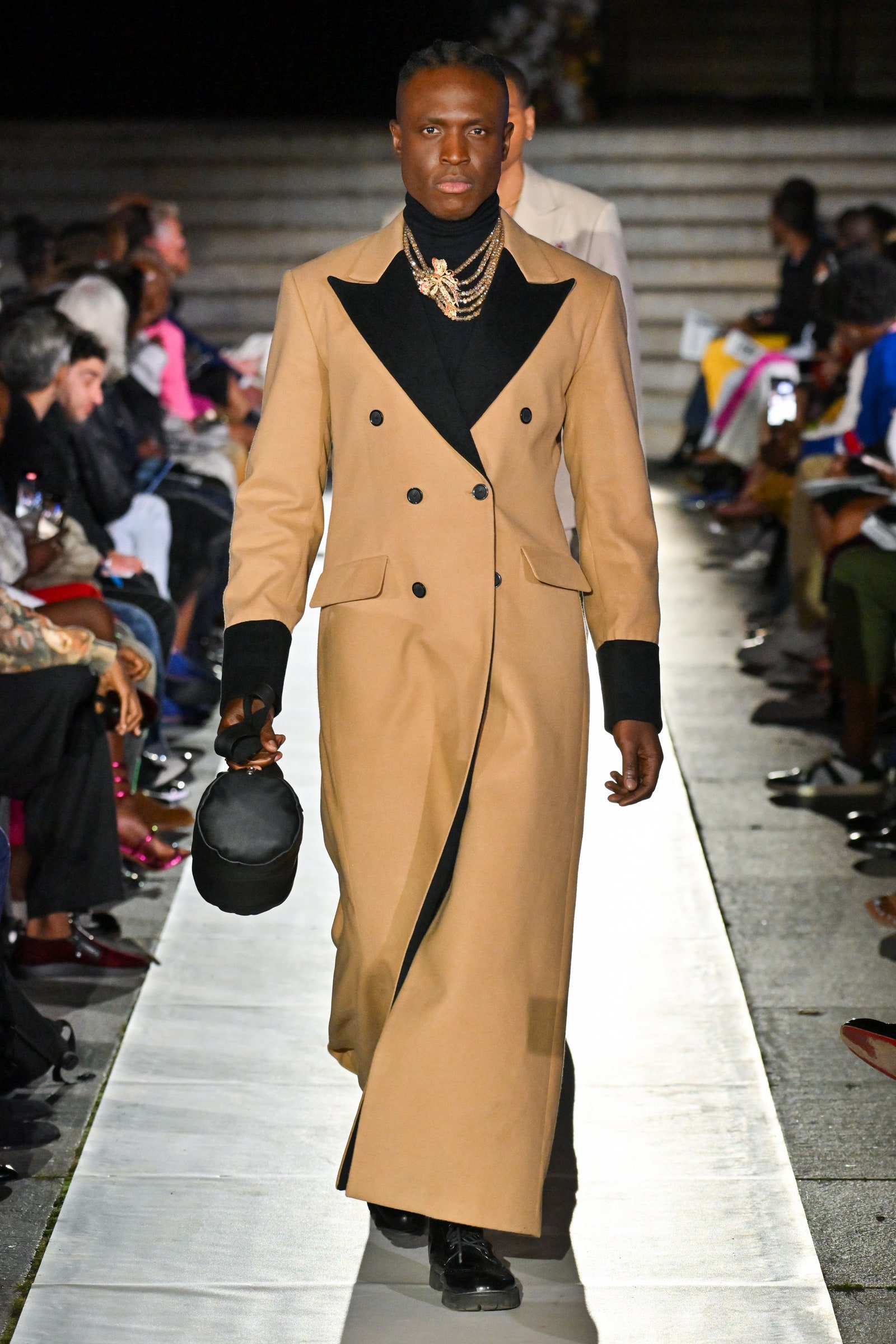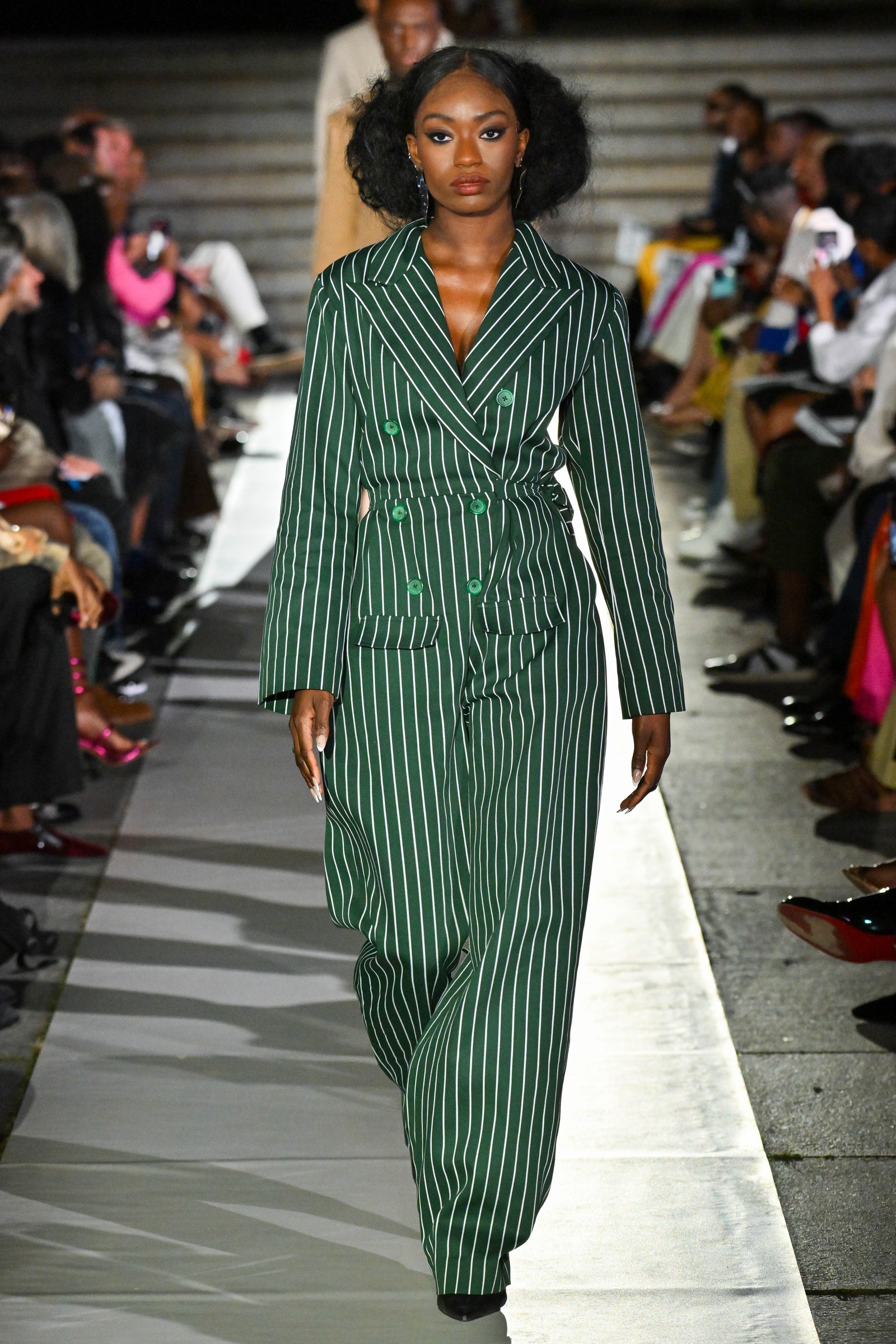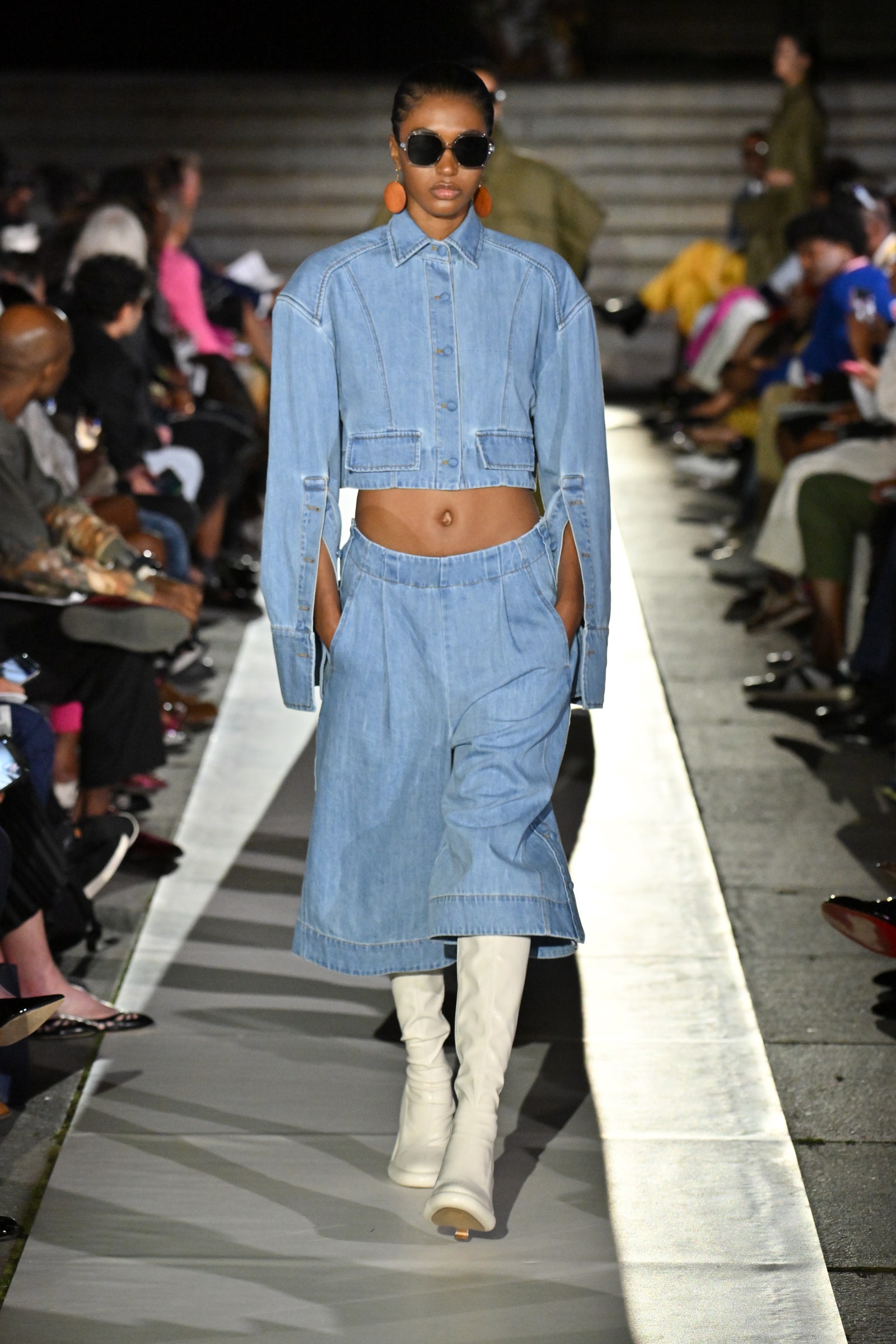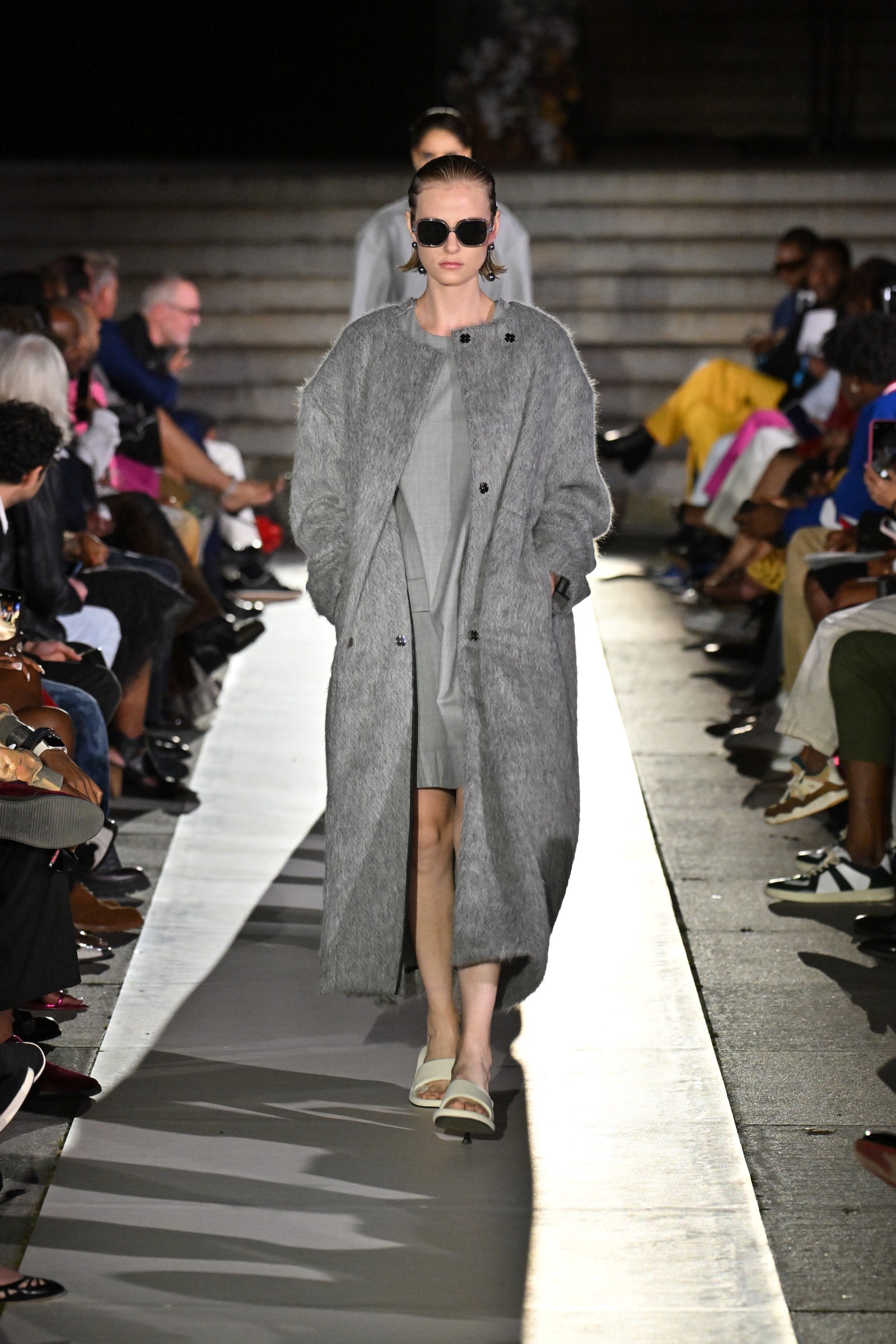In Daniel’s words, “it can take a minute for people to really recognize an amazing designer.” As such, this year’s runway featured two returning designers—A. Potts and Nicole Benefield Portfolio—alongside newcomer LaTouché.
NEW YORK, NEW YORK – SEPTEMBER 03: Teyana Taylor and Brandice Daniel attend the 17th Annual Harlem’s Fashion Row Fashion Show & Style Awards on September 03, 2024 in New York City. (Photo by Theo Wargo/Getty Images)Theo Wargo/Getty Images
“I found this image, I believe it was from 1976, of Iman on the beach in Zanzibar, and that sort of grounded the whole collection,” Aaron Potts said backstage of his latest A. Potts effort. An alum of Escada, Emanuel Ungaro and and Anne Klein—who also interned for Marc Jacobs during the designer’s tenure at Perry Ellis—Potts presented a collection of Grecian-style gowns and separates in sea-like shades of blue and green, inspired by the ocean. “I wanted to make beautiful clothes for creative professionals,” Potts says of the motivation behind launching his brand five years ago. There was a goal for the team he sought to assemble, too: “To create the environment that I needed as a young person in this business that I never found; An environment that is creative, collaborative [and] healthy, where people feel seen, and valued. That is equally as important to me as the clothes, and we hope that that spirit comes through the clothes, and that people feel that.”
Following A.Potts was the first-ever full collection by LaTouché, who counts Jimmy Fallon, The Roots, and various members of the Golden State Warriors as clients who turn to him for custom suiting. “Coming from Haiti, it’s all about using what’s around you to the best of your ability,” he told Vogue. To that end, his double vented blazers, trenches, and slacks were fashioned from wools and tweed (the latter is a favorite of his) but also from more unexpected textiles, like those used in upholstery. “The number one thing for me is individuality,” he shared of his approach to design. “The next thing is for each piece to be timeless.”
The show concluded with a collection from Nicole Benefield of eponymous label Nicole Benefield Portfolio. Having recently collaborated with Abercrombie & Fitch, she was mindful about returning to similar proportions that felt relaxed but elevated. “The unlock for me was taking the causal silhouettes and putting them in refined fabrics,” she said. Lightweight flannel wool and washed linen were employed for pieces that are often know for more structure and heft, like military style jackets and tapered trousers. “It’s not easy doing what we do,” she said, noting the lack of support many Black designers face. “I’m so full of gratitude towards Brandice.”
Seventeen years in, Daniel is still fully invested in expanding opportunities for designers of color. “My passion for this is literally the same as it was day one,” she shared from the afterparty at Sofrito—the same restaurant where she hosted the first HFR runway show in 2007. “It’s absolutely a calling. All of that you just saw came from an abundance of talent but a lack of resources. I would love to see what designers of color could do with unlimited resources.”


